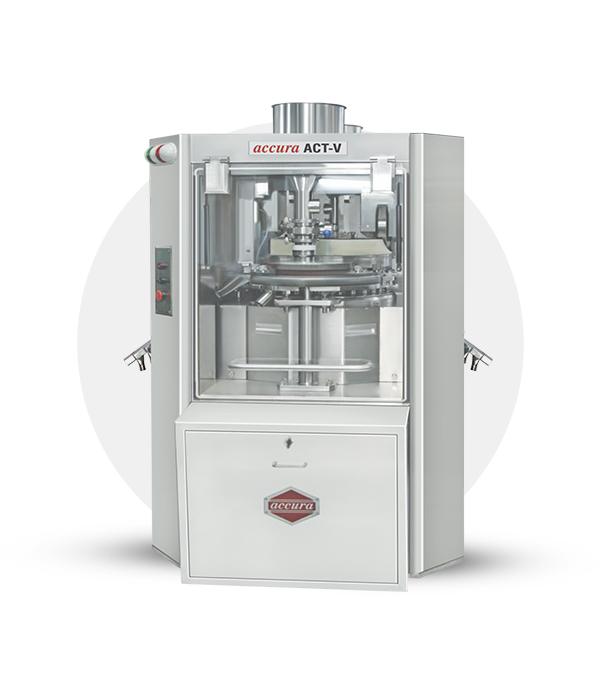Tablet compression machines are essential in pharmaceutical, nutraceutical and chemical industries for producing high-quality tablets with precision and efficiency. These machines come in various variants, including manual, semi-automatic and fully automatic tablet compression machines, each designed to meet specific production needs. Understanding the differences between these machines, their features and applications can help manufacturers choose the right equipment for their operations.
This article provides a detailed overview of manual, semi-automatic and fully automatic tablet compression machines, their roles in production and the industries they cater to.
Manual Tablet Compression Machines
What is a Manual Tablet Press?
A manual tablet compression machine, also referred to as a manual tableting operating machine, is a simple, hand-operated device designed for low-volume production. It is best suited for small-scale manufacturing, R&D labs or applications where hands-on control is essential.

Features of Manual Tablet Compression Machines:
- User-Friendly Operation: Requires manual input to compress powder into tablets.
- Compact Design: Lightweight and portable, making it suitable for small workspaces.
- Precise Control: Allows operators to adjust pressure, tablet weight and thickness manually.
- Minimal Automation: Lacks advanced electronic controls, relying entirely on the operator’s expertise.
Applications:
- Research & Development: Perfect for testing formulations and developing prototypes.
- Small-Scale Production: Used in small-batch manufacturing of specialized tablets or supplements.
- Custom Formulations: Ideal for producing custom-shaped tablets for niche applications.
Advantages:
- Low-cost solution for low-scale production.
- Provides complete control over the tablet compression process.
- Easy to maintain and repair due to its simple design.
Semi-Automatic Tablet Compression Machines
What is a Semi-Automatic Tablet Press?
A semi-automatic tablet compression machine offers a balance between manual operation and automation. It provides more efficiency and precision than manual machines while still requiring some human intervention. These machines are widely used in small to medium-scale production environments.
Features of Semi-Automatic Tablet Compression Machines:
- Partial Automation: Some processes, such as powder feeding or tablet ejection, are automated, reducing manual effort.
- Customizable Settings: Operators can adjust compression force, tablet weight and thickness with greater precision.
- Intermediate Speed: Faster than manual machines but slower than fully automatic models.
- Durable Design: Built with robust components to handle moderate production loads.
Applications:
- Medium-Scale Production: Used in industries requiring consistent production without investing in fully automated equipment.
- Specialized Tablets: Suitable for producing effervescent, chewable or coated tablets.
- Educational and Training Labs: Ideal for teaching purposes due to its user-friendly operation.
Advantages:
- Faster and more efficient than manual machines.
- Requires less manual labour while maintaining control over production settings.
- Suitable for scaling up from small-batch production.
Fully Automatic Tablet Compression Machines
What is a Fully Automatic Tablet Press?
A fully automatic tablet compression machine, also called a fully computerized tablet press machine, represents the pinnacle of tablet manufacturing technology. These machines are equipped with advanced automation, making them capable of handling large-scale production with minimal human intervention.
Features of Fully Automatic Tablet Compression Machines:
- Complete Automation: Handles powder feeding, die filling, compression and tablet ejection without manual input.
- High-Speed Operation: Capable of producing thousands of tablets per hour, ideal for mass production.
- Advanced Control Systems: Equipped with Programmable Logic Controller, touch-screen interfaces and real-time monitoring for precision and efficiency.
- Consistency and Accuracy: Ensures uniform weight, thickness and hardness across all tablets.
Applications:
- High-Volume Production: Essential for manufacturing large batches of pharmaceuticals, supplements and over-the-counter drugs.
- Complex Formulations: Can produce bilayer, multi-layer and modified-release tablets.
- Global Manufacturing: Suitable for companies targeting international markets with strict regulatory standards.
Advantages:
- Significantly reduces labour costs due to automation.
- Delivers high-quality tablets consistently, even at high production speeds.
- Minimizes material wastage through precise powder handling.
- Simplifies compliance with stringent regulatory standards.
Comparison Table: Manual, Semi-Automatic and Fully Automatic Machines
| Feature | Manual Tablet Press | Semi-Automatic Tablet Press | Fully Automatic Tablet Press |
|---|---|---|---|
| Operation | Fully manual | Partially automated | Fully automated |
| Production Volume | Low | Medium | High |
| Speed | Slow | Moderate | High-speed |
| Control | Complete manual control | Mix of manual and automated control | Fully computerized controls |
| Applications | Small-scale production | Medium-scale production | Large-scale production |
| Cost | Low | Moderate | High |
| Skill Requirement | Minimal | Moderate | High |
Choosing the Right Tablet Compression Machine for Your Requirements
Selecting the right tablet compression machine depends on your production requirements, budget and long-term goals. Below are some tips to guide your decision:
- Evaluate Production Volume
- For small-scale production or Research and Development, a manual tablet press is sufficient.
- For medium-scale production, opt for a semi-automatic tablet press to balance speed and cost.
- For large-scale operations, a fully automatic tablet press is indispensable.
- Consider Tablet Specifications
- If your products require advanced features like bilayer or multi-layer tablets, a fully automatic machine is necessary.
- For standard tablets, semi-automatic and manual machines can suffice.
- Factor in Budget and ROI
- Manual machines are cost-effective for small-scale operations.
- Fully automatic machines require higher investment but offer significant savings in labour and material wastage over time.
- Scalability
- If you anticipate scaling up production, consider investing in a semi-automatic or fully automatic machine to accommodate future growth.
Applications Across Industries
Pharmaceutical Industry
- Manual Machines: Research & Development for drug development.
- Semi-Automatic Machines: Medium-scale production of tablets with basic formulations.
- Fully Automatic Machines: Large-scale production of prescription and over-the-counter drugs.
Nutraceutical Industry
- Producing vitamins, herbal supplements and multivitamins using semi-automatic or fully automatic machines.
Food and Chemical Industries
- Compressing flavoured tablets, detergent tablets or chemical products using semi-automatic or fully automatic machines.






